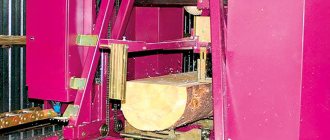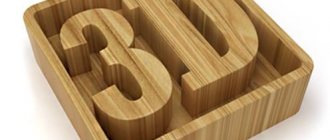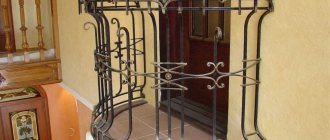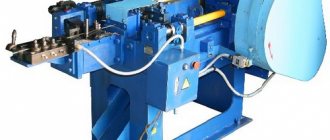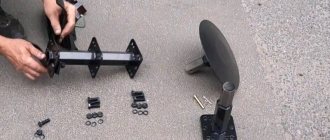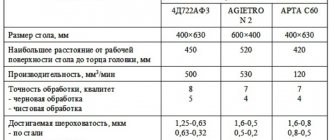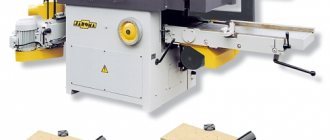Purpose, area of application of the machine
TV-4 is a universal, simplest lathe that performs many operations on the outer and inner surface of a metal workpiece, turning it into a finished part. TV-4 is more popular in use as a training option for turning equipment in various educational institutions. For this reason, the machine is also called “school machine”. This is not professional equipment designed for large scale production, but equipment that is only suitable for training. The main purpose is to enable students to gain minimal skills in the manufacture of metal parts.
TV-4 equipment can perform the following types of work:
- Boring and grinding the surface of a steel workpiece by rotating.
- Trim ends with a high degree of precision.
- Drill holes.
- Cut different types of threads with different pitches.
The functionality of the machine is small, it is simplified with the possibility of reducing the cost of the design. Modernized equipment with improved technical characteristics has expanded functionality.
Characteristics and design features
Since the machine is not professional equipment and has few functional capabilities, it is designed so that a teenager can work on it without difficulty.
The advantage of TV-4 is the indestructibility of the machine. Modern similar foreign-made devices, in the event of any breakdown, will significantly hit your pocket, and besides, it is not always possible to get the necessary part in workshops. The TV-4 model is difficult to break, and finding the necessary spare parts in the event of a breakdown is not difficult.
Overall dimensions of the workspace
TV-4 is a small-sized equipment - 47x102x144 cm and weight - 280 kg. Due to its similar dimensions, the machine is suitable for work in small training workshops.
Specifications
The electric motor power of the equipment in question is 0.6 kW. At the same time, the total weight of the machine is 280 kg, which allows it to be easily located in domestic conditions.
Main settings
The main parameters of TV-4 include:
- distance between centers – 35 cm;
- longest turning length – 30 cm;
- the maximum diameter of the workpiece processed above the upper part of the support is 125 mm;
- diameter processed above the bed – 20 cm.
The components in the machine are classic, with certain technical characteristics that allow you to perform all turning operations typical for this type of equipment.
Spindle
It is located in the front spindle headstock and its main function is to rotate the workpiece using a three-jaw chuck. It receives 6 digits of revolutions from the receiving pulley. Maximum – 710 rpm.
The largest diameter of the processed rod on the spindle is 15 mm. The end of the spindle is threaded – M36x4.
Caliper and feed
Designed to move the cutting tool. Has 4 carriages:
- The first one moves in the direction of the bed.
- The second one moves along the transverse guides of the first carriage, moving the cutting tool in the transverse direction.
- The third one rotates 45 degrees from the middle position in both directions.
- The fourth one carries the tool holder and moves in the longitudinal direction along the third carriage.
Cutting slide
According to the technical characteristics, the incisor slide assumes a displacement of 5 cm.
Tailstock
She is also called a stubborn grandmother. This is a structural part whose main function is to support the second end of the workpiece using the center. She fixes the future detail.
It is located on a base that moves evenly along the frame guides. The thrust headstock contains a quill that moves in the longitudinal direction. Its movement is carried out by a flywheel.
Electrical equipment
The drive is carried out from an asynchronous electric motor ~220V. Through clinometer gears and a single-stage pulley, the movement is transmitted to the running shaft and gearbox.
Electrical equipment also includes an electrical panel, transformer, and fuse links. The electrical panel and magnetic starter are located in the right cabinet, and the electric motor itself with a push-button station is in the left.
General dimensions (dimensions) and weight
The machine belongs to the light class of equipment. Its parameters in mm are 1100x470x1020. Processing accuracy class H, which allows an error of no more than 10 microns.
Thanks to its comfortable size, it is even suitable for installation in an apartment or on a balcony. That is why the machine is popular among household craftsmen.
Electrical equipment
The rotation process in the machine is driven by a three-phase electric motor with a power of 1 kW, which is designed to be connected to a 380 V electrical network. In order to use it at home with a single-phase voltage of 220 V, it is necessary to replace the motor or install a special unit.
Important! In case of power failures, interruptions or temporary absence, it is imperative to disconnect the equipment from the power source.
Operation of a screw-cutting lathe TV-4
Before starting work on TV-4, students should be familiarized with the basic technical characteristics of the design and basic safety precautions.
When operating the machine, the following steps should be followed:
- Perform a preliminary inspection of the equipment and prepare to work on it. Inspect the equipment and workplace; it should be cleared of chips during the previous shift. If there are no malfunctions, set up the machine to produce a part of the specified type.
- Reproduction of work on the unit. Perform preliminary equipment setup, correctly position the workpiece between the tailstock and headstock to obtain an accurate part.
- Carry out preventive maintenance. After work, remove any remaining shavings and metal dust after each processed part. To do this, you can use special devices - brushes or a vacuum cleaner. It is also necessary to check the integrity of the equipment and disconnect the machine from the electrical network.
TV-4 is not designed for the production of parts in large quantities; accordingly, the degree of its load must be controlled.
Important! There should be no vibration when operating the metal cutting machine! If vibration occurs, leave the machine in operation and take corrective action. First of all, check the fastening of the tool and the part being turned.
Structural elements of equipment
The TV-6 model lathe consists of the following components:
- feed control box;
- front and rear cabinets;
- protective screen;
- trough for supplying lubricating oil;
- headstock;
- device apron;
- tailstock;
- supporting frame;
- electrical system elements;
- guitar;
- protective casing.
Main components and controls of the TV-6 machine
The feedbox of the TV-6 lathe, driven by a gearbox using transmission gears, consists of:
- two shafts;
- five gears with different parameters;
- block gears;
- running roller;
- couplings;
- round nut;
- shift handles;
- drain plug.
The handle on the front side of the feed box allows you to determine the parameters of the thread cut on the workpiece.
Another handle, located on the feed box panel, is responsible for turning on the machine’s running roller. The design of this unit of the TV-6 machine makes it impossible to simultaneously turn on the lead screw and the lead roller. Models of lathes belonging to the category of industrial equipment are also equipped with a similar safety system. Lubrication of all feed box components (gears and rubbing surfaces) is ensured by oil supplied from the trough using special wicks.
Headstock device
Tailstock device
The front cabinet has a U-shaped configuration, and to enhance its rigidity, there are special ribs in its upper and lower parts. On its back side there is a drive electric motor of the unit, and on the front side there is a button that controls its reversing switches. The rear TV-6 cabinet has a similar design; a panel with electrical equipment is mounted on it.
The tailstock, which has a mounting hole for Morse taper No. 2, includes the following elements:
- base;
- unit body;
- connecting screws;
- quill;
- key screw;
- flywheel to control the movement of the quill;
- handles for fixing the quill and the tailstock itself.
The tailstock design allows the quill to be moved up to 65 mm.
The frame of the device, due to which all its structural units are connected and supported in a given position, has a box-like structure with several windows. There are two prismatic guides on the frame, along one of which (front) the carriage moves, and along the second (rear) the tailstock of the unit moves. The load-bearing elements of the frame itself, in the front part of which a rail with a lead screw is attached, are two pedestals.
The most important mechanism of the TV-6 lathe is its apron, in which it is necessary to highlight the following elements:
- four gears (two worm and two rack and pinion);
- control handles;
- handwheel for manual feed control;
- queen nut;
- a running roller responsible for the longitudinal feed of the caliper;
- shaft.
Machine support
The support of the TV-6 screw-cutting lathe is composed of four carriages. This piece of equipment is responsible for fixing the cutting tool and moving it during metal processing. The tool holder, in which the working tool is fixed, is located on carriage No. 4; it is capable of moving along the guides of carriage No. 3 only in the longitudinal direction. The rotating carriage is No. 3, which is mounted on the second carriage. Carriage No. 2 is mounted on carriage No. 1, it is capable of moving along its guides in the transverse direction. Carriage No. 1 moves along the frame guides - in the longitudinal direction.
In order to transmit rotation from the gearbox of the unit to the elements of the feedbox, a transmission mechanism, also called a guitar, is used. The main structural element of the guitar is the bracket on which the gears are mounted. There are no replacement gears for the TV-6 machine, so the gear ratio provided by the guitar is constant and amounts to ¼.
TV-6 machine gearbox
